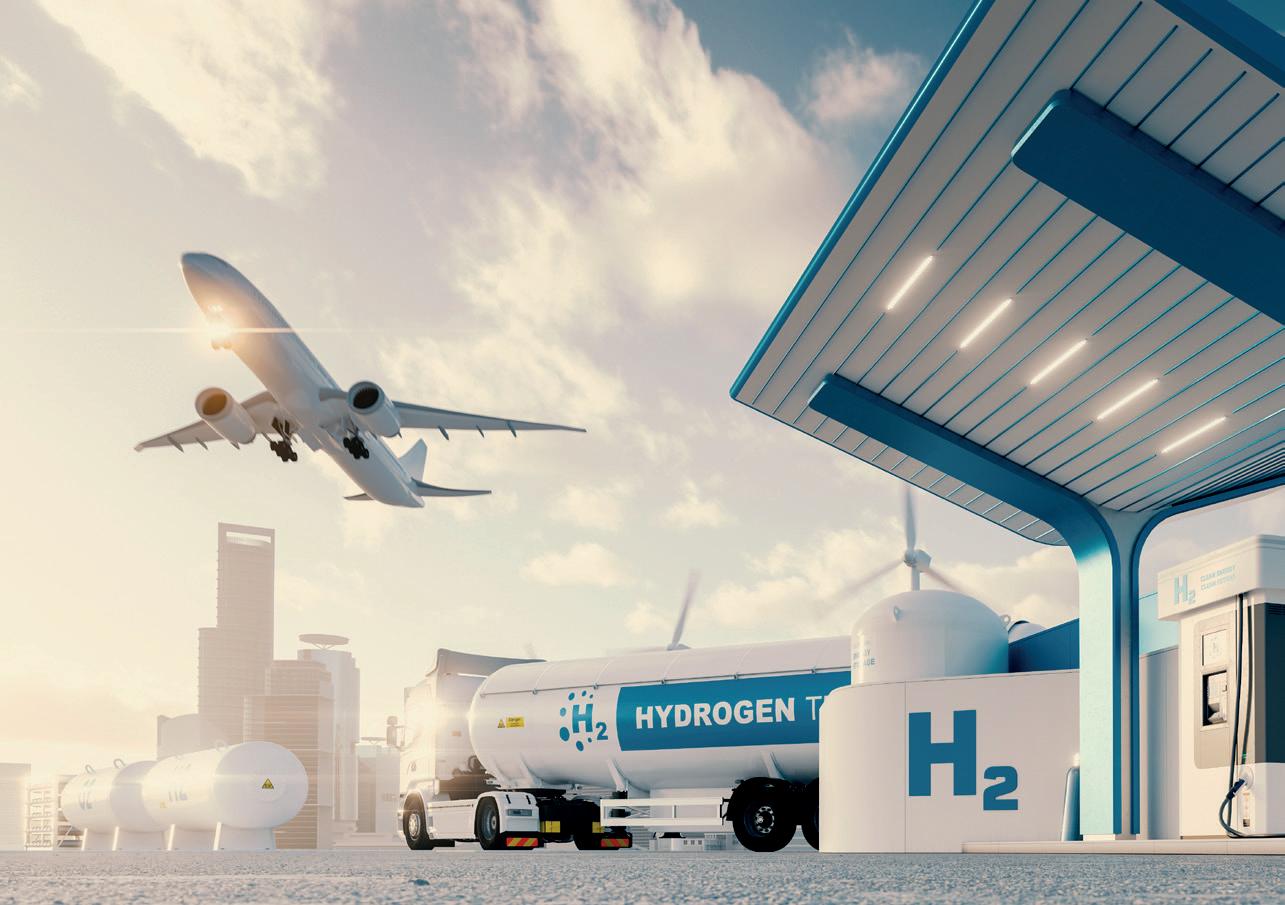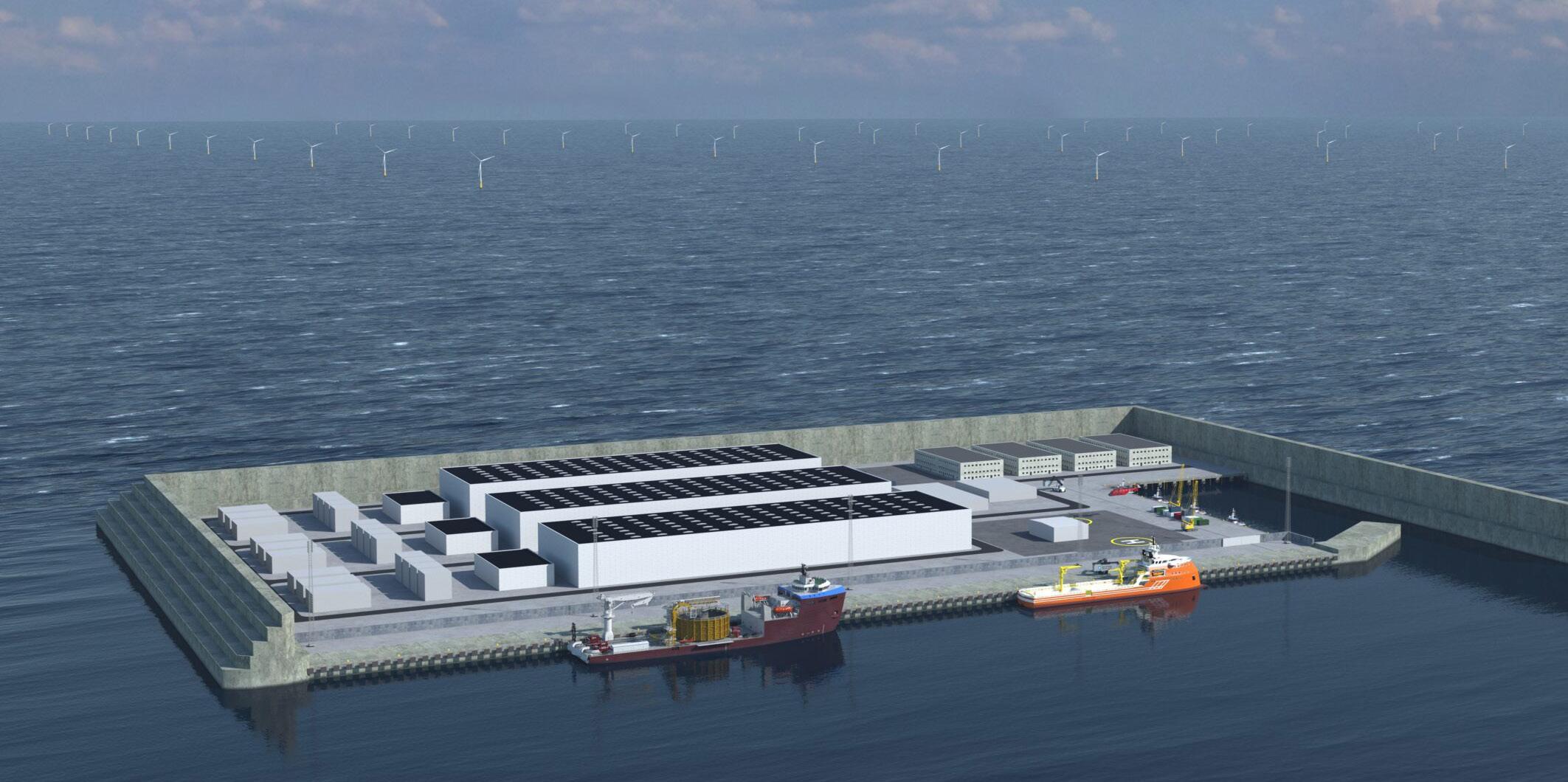
5 minute read
VISION FOR IRELAND
from HIL ISSUE 15
IRISH NATIONAL HYDROGEN STRATEGY: HIGHLIGHTING THE VISION FOR IRELAND
by Floyd March
Advertisement
After the Irish National Hydrogen Strategy was announced and the main takeaways continue to be discussed, Hydrogen Industry Leaders brings the detailed breakdown of the hydrogen production pathways involved, operating models and the long-term vision for the Irish hydrogen strategy.
Recapping the release of the strategy's core takeaways, there will be a focus on kickstarting production with a 2 GW target of offshore wind by 2030, and more clarity for future end users that there is a strong commitment to hydrogen production in Ireland.
Additionally, there were policy announcements regarding the steps to enable the development of infrastructure, the importance of safety and regulation, and enabling innovation and skills across the value chain.
The national strategy then went on to break down the hydrogen production pathways, operating models, roadmap to scalability and the long-term vision for the Irish Government.
One of the biggest pathways to secure large volumes of hydrogen will come from the use of electrolysis of water. Ireland will be focussing on overcoming some of the barriers and challenges currently involved with this.
It was announced that before 2030, hydrogen will be produced from gridconnected electrolysis from surplus renewables. This will initially be needed to meet EU targets in specific end-use sectors such as transport, and will likely be used in the power system. The operating models for these should be beneficial to the electricity system and sufficient grid infrastructure is needed to facilitate this.
Rules on additionality being navigated by Irish Government
The availability of Renewables is an important issue to address, especially with rules regarding additionality. As hydrogen from electrolysis requires significant volumes of renewable electricity to produce it, energy losses during the conversion process mean that the hydrogen produced contains only around 60-70% of the energy content of the original renewable electricity supplied. While Ireland has the resource potential to produce significant volumes of renewable hydrogen, it will take time to deploy the required onshore and offshore renewables at a sufficient scale.
Speaking about the National Hydrogen Strategy, Hydrogen Industry Leaders heard: “Our target of 80% renewable electricity by 2030 will mostly be dedicated to decarbonising power generation and supporting the expanding electrification of the heat and transport sectors.”
Ireland could propel itself as an industry leader in Europe.
Floyd March, Editor, HIL
However, analysis undertaken as part of the Climate Action Plan 2023 estimates that the 80% target could also support as much as 2-4 TWh of renewable hydrogen production by 2030. “This may increase substantially with the detailed design of the electricity network in the second version of 'Shaping Our Electricity Future' to be published this year.”
A portion of this potential would be directly attributed to the potential role hydrogen could play in reducing system curtailment, also estimated to be c. 16% by 2030 (or 9.7 TWh).
EirGrid is currently finalising its work on Shaping Our Electricity Future and will provide updated figures on this as part of this work. Beyond this, greater use of Ireland’s offshore renewable energy resources will be required.
In March 2023, the Department launched the Policy Statement on the Framework for Phase Two Offshore Wind. The Framework sets out Ireland’s longer-term vision for offshore wind energy, targeting 20 GW of offshore production by 2040 and at least 37 GW by 2050, opening the opportunity to significantly ramp up renewable hydrogen production post-2030.
Cost barriers could be a thing of the past
Costs are a natural challenge to overcome, especially with some technology being in its infancy when used on a GW scale. These costs are primarily driven by two key factors, the cost of renewable electricity and the capital costs of electrolysers.
Positively, Electrolyser capital costs have dropped significantly in recent years and are projected to continue to do so. Utility-scale solutions are now becoming available and supply chains are ramping up with many equipment providers beginning to offer products in the 100 mega-watt scale and moving towards the giga-watt scale.
The report highlighted:
“These technological developments are putting significant downward pressure on the production costs of renewable hydrogen with electrolyser costs predicted to roughly halve by 2030 and drop to one-third by 2050. With renewables costs also continuing to fall, renewable hydrogen costs are expected to fall dramatically over the coming decades, with some predicting it may become the cheapest form of low-carbon hydrogen production by as early as 2030.”
Ireland’s renewable energy resources are some of the most energy productive in the world, and these falling costs will greatly improve the competitiveness of Irishproduced renewable hydrogen.
The Hydrogen Council, an initiative that includes 150 multinational companies representing the entire hydrogen value chain, predicts the costs of renewable hydrogen could fall to as low as 0.9-1.6 $/kg by 2050, which equates to roughly €2.5-4.5 c/kWh by 2050.
Focusing on the LCOH is also an important consideration to prove the business case for hydrogen and incentivise the private sector to match the ambitions of the Irish Government and help deliver. Arguably, this is one of the most important aspects of delivering a hydrogen economy.
As well as electricity, electrolysis also requires large quantities of water as an input. While this can prove to be a bottleneck for many countries across the globe, Ireland is not expected to have significant issues supplying the quantities of water required to produce renewable hydrogen.
For example, supplying 2 GW is estimated to require less than 1% of Ireland’s current water supply including leakages. In addition, water can also be sourced from local sources, such as rainwater, aquifers/streams, as well as through desalination of seawater, which is particularly relevant in the case of hydrogen production from offshore renewable sources.
However, the report stated: “It will be important to engage with Uisce Éireann as the sector develops to ensure any potential future water needs for the hydrogen sector are understood and that sufficient infrastructure investment in the water network can be made in advance so that no localised supply issues emerge.”
Hydrogen can be produced from electrolysis by either directly connecting to a renewable electricity source, or alternatively by using power from the national electricity grid. When using the latter, the emissions intensity of the hydrogen is determined by the sources of electricity feeding the national grid. In 2021, 23.9% of Ireland’s primary energy inputs to electricity came from renewables.
While the foundations for electrolysers are built, the Irish Government will be utilising electrolysis from the grid. The decision was explained in the strategy, where it was stated that: “In the interim period, clear rules are needed to determine if and when electrolysis connected to the electricity grid can be deemed renewable or not, as discussed in more detail below.
This also correlates well with times when the electricity market prices and the emission intensity of the grid are lowest, potentially offering opportunities for hours of low-cost sustainable hydrogen production.
Rules for Determining if Grid Electrolysis is Renewable
The flexibility of operation that grid electrolysis provides also means it is possible to operate them in a manner which is less beneficial to the grid and produces less sustainable hydrogen.
While grey hydrogen’s carbon footprint ranges from 10-20kg CO 2 /kg H 2 , The Irish Government are looking at reducing this impact through green hydrogen production across multiple sectors.
To reduce this risk, the European Commission has developed its draft delegated act on additionality. This sets out the criteria under which grid electrolysis can be deemed to be renewable, as summarised below:
• A power purchase agreement must be in place with a renewable electricity source, constructed within 36 months of the electrolyser, and which has not received operating aid.
• The electrolyser must be located within the same bidding zone as the renewable source.
• The time difference between the renewable electricity and the hydrogen being produced cannot exceed one month initially, reduced to hourly in 2030.
Hydrogen produced from grid electrolysis can also be considered renewable if produced in an electricity system with greater than 90% renewables over a calendar year or if produced during periods of curtailment or dispatch down.








